The Big Read: Special needs education has come a long way but true inclusiveness still a work in progress
SINGAPORE — During his first year in primary school, Ms Annette Chua’s nephew was unable to adapt to his new surroundings.
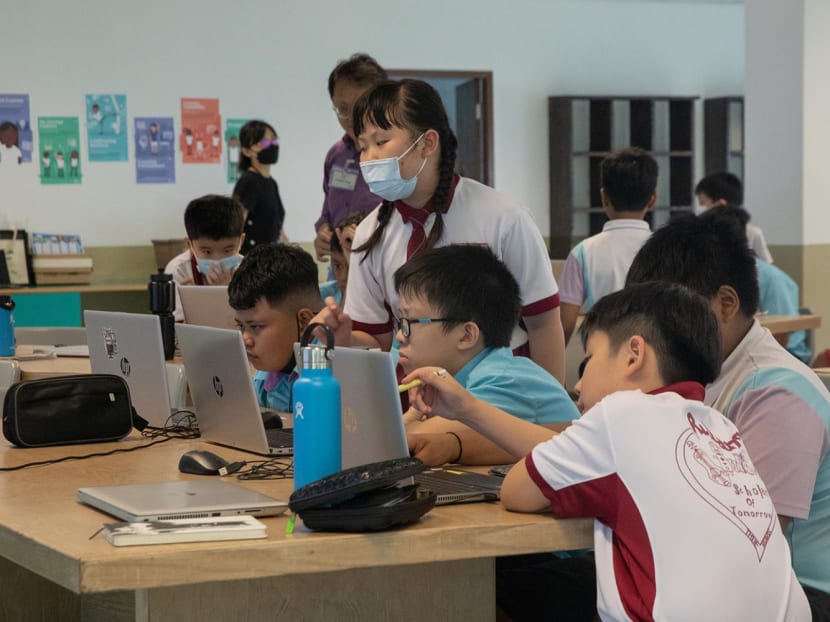
Students from special education school Grace Orchard School being mentored by students from Rulang Primary School during a coding class on March 23, 2023.
- Industry experts said that the special needs education sector has improved over the years, with more resources and professional teachers
- There are also greater efforts to promote inclusivity between mainstream children and those with special needs through various activities
- However, industry experts acknowledged that there is some way to go before Singapore becomes truly inclusive, where mainstream and special needs students study side-by-side
- Some school partnerships are ad hoc and more resources could be deployed to handle special needs students in mainstream schools, they said
- On the whole, experts and parents agreed on the need for greater awareness and acceptance of special needs persons, which they said will open up more career pathways for children
SINGAPORE — During his first year in a mainstream primary school, Ms Annette Chua’s nephew was unable to adapt to his new surroundings.
The then eight-year-old had been diagnosed with mild autism and felt “overwhelmed” by the noise in his classroom.
The boy was also teased and criticised by his classmates for his behaviour, such as his sensitivity to noise and inability to pay attention in class.
The following year, Ms Chua enrolled her nephew in Pathlight School, which caters to students on the autism spectrum with related conditions between the ages of seven and 18.
He became more cheerful, said Ms Chua, who is the boy’s caregiver and lives with him.
“He finally found a place where people are of his own kind and they know him and understand him,” said the 39-year-old part-time tutor.
She subsequently enrolled her younger nephew, aged 12, whom she is also a caregiver to, and her son, aged nine, in Pathlight School.
Both of them have mild autism, and the 12-year-old also has global developmental delay.
Ms Chua said that she is caring for her nephews as their parents, who are divorced, have mental health issues and are unable to fulfil their parental responsibilities.
The options available to Ms Chua’s nephews and son in the education landscape is a testimony to the sea of change that has swept the special needs education sector.
Besides improving the professionalism of special needs teachers, more such schools have been set up to cater to children with special needs over the years.
There are currently a total of 22 government-funded special education schools here, with a further six to become operational by the 2030s.
To promote inclusivity, the Government has also set up partnerships between special needs schools and general education schools to promote intermingling between children.
Schools themselves are taking things one step further, with Anglo-Chinese School (ACS) — which has a reputation for drawing students with families from higher socioeconomic backgrounds — announcing in February this year that it will establish a special education school.
The school, which will begin operations in 2026, will take in students with moderate special education needs who have autism spectrum disorder.
ACS had previously told TODAY that the finer details are yet to be finalised, but it envisions that ACS (Primary) in Tengah and the new special needs school will be in adjoining compounds and share facilities and infrastructure. There will also be some joint school-level programmes and events.
Industry players said that while strides have been made to integrate neurotypical children with those who have special needs, there is still some way to go towards achieving the end goal of an inclusive society.
Under the Ministry of Education (MOE)’s classification, students with special educational needs include those with learning disorders such as dyslexia, attention deficit hyperactivity disorder and mild autism spectrum disorders, as well as disabilities such as sensory or physical impairments.
As the saying goes, it takes a village to raise a child.
TODAY takes a look at the various steps that the Singapore "village” has taken over the years to raise and educate its special needs children, especially those with mild to moderate learning and developmental disabilities such as autism and intellectual disability, and what more needs to be done.
OVERVIEW OF SPECIAL NEEDS EDUCATION SECTOR
Singapore has about 35,500 students with reported special educational needs as of December last year, according to MOE.
About 80 per cent of these students are in mainstream schools, which cater to students who have cognitive abilities and adaptive skills to access the national curriculum and mainstream learning environment.
The remaining 20 per cent with more severe special educational needs are supported in the 22 special education schools here.
For students with adequate cognitive functioning but a moderate-to-severe deficit in adaptive functioning, they attend special education schools that offer the national curriculum and specialised programmes designed to meet their needs.
The rest attend special education schools that offer a customised curriculum which helps them to attain skills necessary for further education and training, employment and independent living.
Industry observers said that on the whole, the special needs education sector has improved in terms of resources and training of educators to better cater to the educational needs of these children in both special education schools and mainstream schools.
There have also been key initiatives implemented to foster greater interaction between special needs and other children, they said.
They pointed to the Satellite Partnership programme set up by MOE in 2008, which pairs up students from mainstream schools and special education schools to do joint activities, as a significant step towards providing them with more opportunities to interact.
The programme was renamed School Partnerships (General Education – Special Education) earlier this year to cultivate more collaborations between students in these schools, as well as professional exchanges between teachers to build their capabilities.
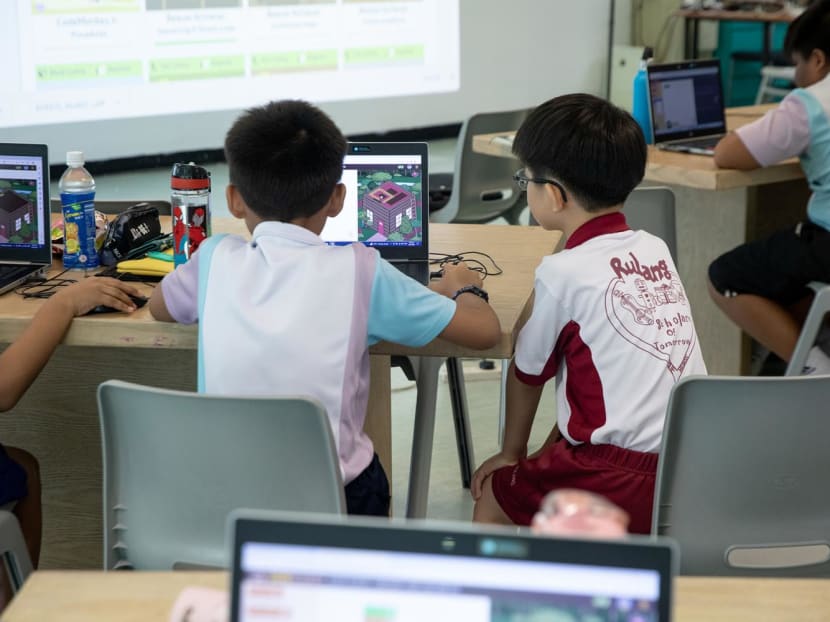
Within general education schools, the professional development of teachers has also improved, allowing them to better identify and employ teaching strategies for children with special needs, said industry players.
Since 2005, teachers undergoing training have been provided with a basic understanding of supporting special needs students. A core group of teachers are also put through a specialised programme — known as the Teachers trained in Special Needs programme — to support students with special needs.
Mr Calvin Chew, who spent more than a decade at St Andrew’s Autism School as an educator, said that the move in 2019 to make it compulsory for all children with moderate to severe special needs to attend a government-funded special education school was a key change in the sector as well.
It meant that the education system had to improve its existing resources and infrastructure to accommodate more children with special needs, said Mr Chew, who has also been a teacher in mainstream schools for close to a decade.
Prior to that, parents were not required to send their children who had moderate to severe special needs to school.
In 2020, MOE also launched The Journeys Package, a framework to provide greater clarity and more distinct progression pathways for educator roles in the special needs education sector.
The framework was an “overhaul” of the sector, improving its professionalism and providing teachers with progression and recognition, said Mr Chew.
Within mainstream schools, allied educators providing learning and behavioural support were also renamed as Special Educational Needs (SEN) officers last year. The move was significant as it signalled a recognition that there is a need for dedicated officers to serve children with special needs, he added.
SEN officers support students with special education needs in mainstream schools.
CHANGES IN THE SPECIAL EDUCATION LANDSCAPE
The special education system in Singapore has progressed from a decade ago, both in terms of the quality of education provided to students, as well as the level of inclusivity and interaction between special needs students and their mainstream counterparts, said industry players.
Ms Esther Kwan, the principal of special education school Grace Orchard School, said that the entire sector has moved from a “care-based sector”, where the focus is on caring for special needs children and teaching them simple skills, to one that is focused on the educational outcomes of the child, so that students can grow to be “as much as they can be”.
Her school takes in students with mild intellectual disability and mild autism spectrum disorders between the ages of seven and 18.
This year, Grace Orchard School started a pilot programme to group its students based on their cognitive skills and abilities, rather than their language and mathematical skills.
Ms Kwan said that this is part of the school’s efforts to implement a mediated learning experience, where the curriculum focuses on improving the thinking process of students, rather than simply having them give the right answer to a problem.
Interactions between special needs and mainstream students have also improved, said teachers.
For example, Bukit Merah Secondary School and APSN Tanglin School have expanded the scope of joint activities for their students since they set up their satellite partnership in 2018.
APSN Tanglin School caters to students between 13 and 16 years old with mild intellectual disability and significant limitations in adaptive behaviour such as social skills.
Located along Alexandra Road, it is about 15-minute walk away from Bukit Merah Secondary School in Lengkok Bahru.
In 2018, both schools took part in Play Inclusive, a sports competition organised by Special Olympics Singapore and SportCares, where athletes with intellectual disabilities team up with those without to participate in sports.
A year later, they also participated in similar activities for dance and sailing. Students from APSN Tanglin School also visited Bukit Merah Secondary School for the latter’s sports day.
This year, Bukit Merah Secondary School will visit APSN Tanglin School in May to observe the latter’s sports day for the first time. Both sides are also exploring the possibility of activities between student leaders of both schools.
For the first time, teachers from both schools also met to share about their own experiences teaching children with special needs.
Such moves help to build inclusivity on both sides, said the teachers.
Mr Kenneth Lai, the head of department for Physical Education and Sports at APSN Tanglin School who also oversees the partnership, said that the joint activities allow his students to be more comfortable interacting with students from general education schools.
This helps to build their communication skills, which in future will enable them to “speak to people, voice their views, and ask for help” in society, he said.
Mr Lai’s counterpart at Bukit Merah Secondary School, Mr Zubi Kek Boon Ann, said that there is an “overwhelming response” from his students to participate in such joint activities as they enjoy the opportunity to make new friends.
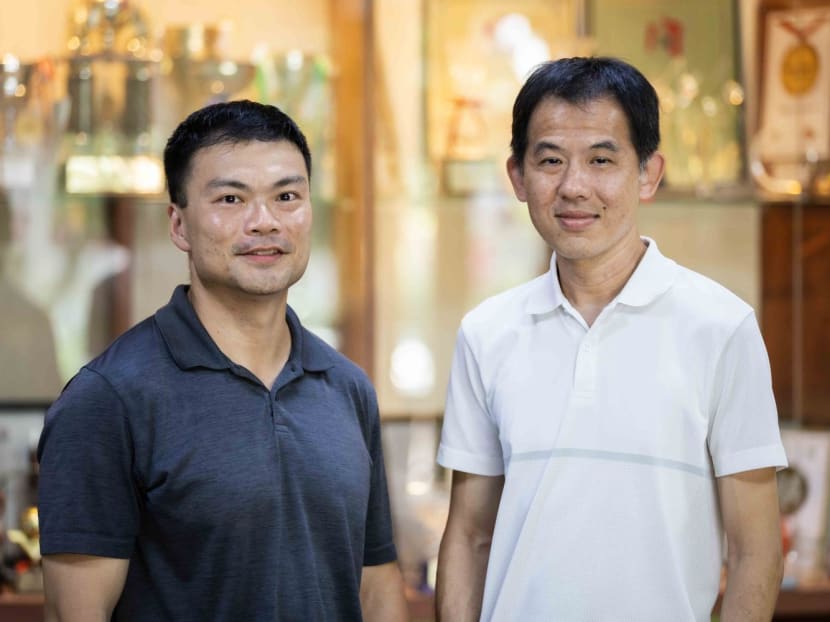
He said that participating students leave with greater empathy and awareness of the challenges that their own classmates, who may have special needs, face.
Within mainstream schools as well, teachers said that the inclusion of special needs students in their classes has also helped to foster inclusion and longer-term friendships with other students.
During a sit-down interview at Concord Primary School, where special needs students study in the same classes as those without special needs, TODAY observed how they have formed strong bonds.
Primary Three pupils Tan Bingwen and Zavier Ong, who has special educational needs, excitedly shared about how they are “best friends forever”. Both are nine years old.
Zavier said that he is friends with Bingwen as the latter respects him and is honest.
At one point, when Bingwen shared that he likes to sing, but was hesitant to do so in front of this reporter, Zavier encouraged him by saying “don’t be shy” and “you can do it”.
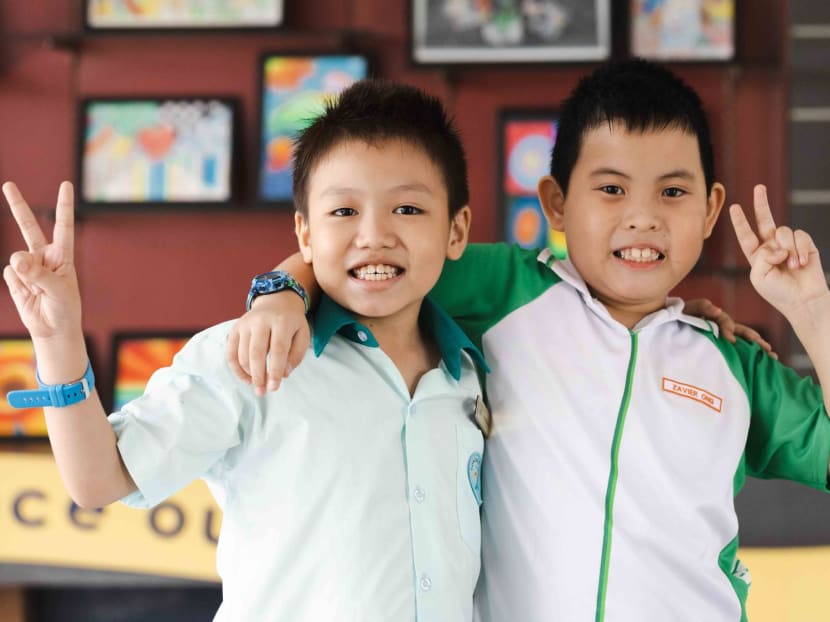
BETTER RESOURCES, IMPROVED PROFESSIONALISM
Industry observers attributed the progress made in the special education sector to greater support provided by MOE in terms of resources, as well as broader awareness across society and among parents.
Ms Kwan from Grace Orchard School said that the sector has “moved a lot” such as in the form of resourcing, not just in finances but in the ability to upgrade or upskill teachers.
While the sector had started out to care for special needs children, it has since shifted to one which emphasises the quality of the child’s education.
“It has moved from that kind of a space (to one) where teachers need to be qualified and have a certain level of training to help students reach the potential that they can be,” she said.
Mr Chew said that when he first joined mainstream schools more than two decades ago, he encountered teachers who did not know the difference between autism spectrum disorder and dyslexia, which are different types of special needs.
“These days, I don’t think you will hear such remarks because there’s a lot more information in the media. Even in the National Institute of Education, there are departments catered specially to special needs training,” he said.
Ms Denise Phua, the president of Autism Association Singapore, also highlighted the use of technology in improving the quality of education in the education sector. The association runs Eden School which is for autistic children. Ms Phua also heads the Autism Resource Centre which runs Pathlight School.
Ms Phua, who is also a Member of Parliament, cited the example of how dyslexic students in some primary schools use technology pens to assist them in reading texts.
Special education schools like Pathlight School also provide IT lessons for its students such as word processing and coding, said Ms Phua, who is a member of the Government Parliamentary Committee for Education.
In mainstream schools, teachers said that the training provided has helped them to better cope with special needs students in their midst.
As a young, untrained teacher 20 years ago, Ms Ee Wei Leng was “overwhelmed” by their behaviour and at having to manage special needs children who could disrupt the class, such as walking around the room, as they have a short attention span.
However, after going through MOE training courses and getting the support of SEN officers and counsellors in the school, Ms Ee, currently a maths teacher at Rulang Primary School, said she feels better prepared to handle such children in her class.
For example, some students may feel “cognitively overloaded” when solving maths problems. To cater to them, Ms Ee said that she tries to explain the mathematical problem pictorially and break the solution up into smaller steps.
She also has other pupils keep an eye on special needs students or step in to help them if necessary, to lighten her load in the classroom. She said that she does this without disclosing to other students that their classmate has special needs.
Teachers from various schools interviewed also agreed that there is a greater awareness in the community about special needs.
As a result, parents are more aware about the types of intervention their children with special needs require and would also get an official diagnosis for them.
WHITHER S’PORE AS A TOTALLY INCLUSIVE SOCIETY?
Despite the progress, there is still some way to go towards creating a truly inclusive education system, industry observers said.
TODAY had previously reported on how some countries such as Canada have an inclusive school system where children with special needs learn alongside those without.
Unlike Singapore, which still has schools that are exclusively for students with special needs, the Canadian province of British Columbia has no special education public schools. Instead, children with special needs are educated within a general education setting.
Can such a form of inclusivity become a reality in Singapore?
Teachers in mainstreams schools said that while resources have improved, they could still use more support in the form of SEN officers or counsellors to help students with special needs.
Mr Johnson Li, the head of department for special educational needs at New Town Primary, said that there are four SEN officers in his school.
Each officer handles about 30 cases at a time. These include students who are clinically diagnosed with special needs, and those who are not but are identified by their teachers as requiring some support.
Mr Li said that while “there will never be a number of (SEN officers) that is enough”, his school manages the caseload by varying the degree of intervention according to the severity of the child’s needs.
He said that most of these students are coping well, and the officers check in on them about once every semester.
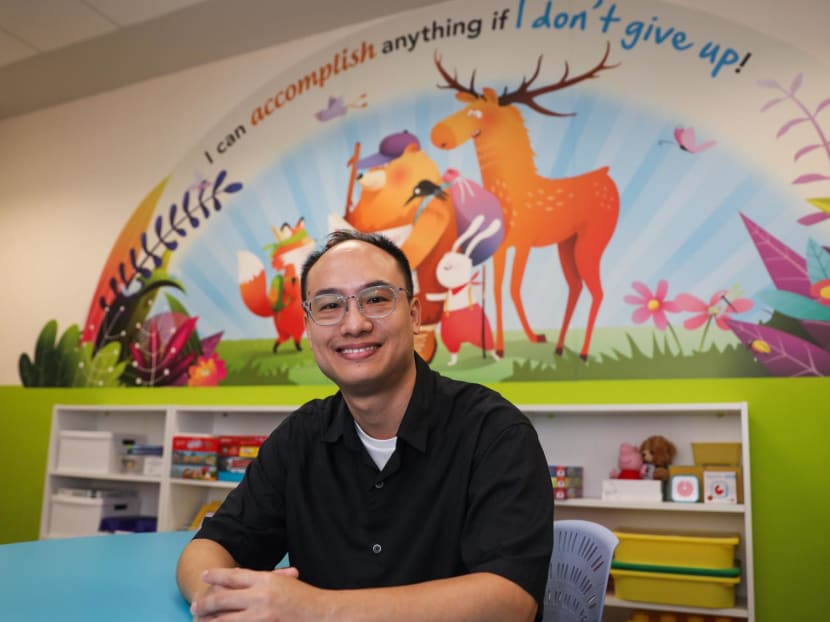
On the other hand, for children who need more intensive support, the officers as well as their form teachers and case managers check in on them daily.
A former SEN officer, who left her job at the end of 2021, said that she felt “very stretched” as there were only two officers in the entire school and they had to monitor 40 cases at any one time, of which about half needed support either in class or outside of the classroom.
As a result, she was not able to provide support at the level that some students required. This was further compounded by the fact that she could only spend time with the students after school, and on days where they did not have co-curricular activities or remedial classes.
The former officer in her 30s, who is currently furthering her studies, requested anonymity as she intends to rejoin the Education Ministry.
In response to TODAY's queries, MOE said that each primary and secondary school has about five to 10 teachers trained in special needs eduation.
There are also more than 700 SEN officers, with each primary school having at least two, and each secondary school having at least one SEN officer.
And while awareness has grown, there is still a long way to go before Singapore can truly become an inclusive society.
Ms Chua, the aforementioned caregiver to three autistic children, said that the oldest of the trio, her 14-year-old nephew, continues to face bullying after joining a mainstream secondary school upon leaving Pathlight School.
In one incident, shortly after her nephew revealed to his classmates that he is autistic, his classmate did not allow him to hold a knife during a food and consumer education lesson as he felt that her nephew could be “dangerous”.
Ms Chua said that several misconceptions, such as how autistic children are “lunatics” and could “go bonkers” anytime, remain in society and make it difficult for the education system to be truly inclusive.
Despite existing school partnerships, some collaborations can also be ad hoc, said Ms Kwan of Grace Orchard School. This means that students are unable to form real friendships, which could serve as important social networks outside of their schools.
In an ideal state, true inclusivity would see children with special needs studying alongside those without, said industry observers, without the need to send them to separate schools.
However, Mr Chew said that some children with special needs need targeted strategies to learn meaningfully.
In a society like Singapore where schools are “the grounds for children to excel and…do well academically”, there could be some people who feel that having children with special needs in the same class could hold other students back, said Mr Chew.
To this end, having separate schools to serve children with more severe needs suits the current education landscape, he said.
Ultimately, observers said, there has to be a broader shift in the community’s mindset so that children with special needs go on to have fulfilling and meaningful lives even after they leave school.
Ms Kwan, the principal, said that access to opportunities after these children leave school remains limited. For example, career paths are narrow, with vocational skills training in special needs schools mostly providing skills in horticulture, hospitality, food and beverage and the retail industries.
Students also typically start working as young as 19, after completing their time in special education schools.
“They need more time to learn, but yet we are getting them to work so early. We are also then saying that they have only these limited choices,” she said.
Ms Kwan added that her school is working to open up new opportunities for students, such as having them work as childcare teacher aides after graduation.
Similarly, Ms Phua of Autism Association Singapore said that the potential of special needs students in both special education and mainstream schools is not fully realised.
She said that the current education model is “very front-loaded” — where learning is limited to a child’s formal schooling years — and is not ideal for those who need to continue their education beyond then.
Progress in the special needs education sector aside, Ms Chua the caregiver said that she is “not so confident” about her nephews’ and son’s abilities to secure a job and live independently in future.
Despite greater awareness in society about the special needs community, the public is still not accepting of them, she said.
“As much we are promoting awareness for the special needs community, my children have invisible needs that are unseen by the public," she said.
“Being able to understand and to accept (special needs persons) are two different things. The public may be aware and understanding (of special needs people).
“However, to be accepting, we still have a long way to go.”








